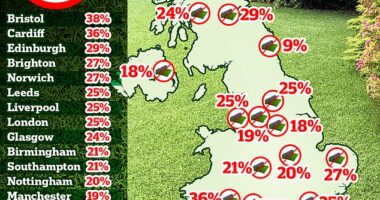
The rules are complicated, but the gist is simple: Payments are calculated based on your earnings and readjusted each year.
After monthly payments are made for a set number of years — usually 20 — any remaining balance is forgiven. (The balance is taxable as income, though a temporary tax rule exempts balances forgiven through 2025 from federal income taxes.)
Monthly payments are often calculated as 10 or 15 percent of discretionary income, but one plan is 20 percent. Discretionary income is usually defined as the amount earned above 150 percent of the poverty level, which is adjusted for household size. PAYE usually has the lowest payment, followed by either I.B.R. or REPAYE, depending on the specific circumstances of the borrower, said Mark Kantrowitz, a student aid expert. The new plan will change that calculus (more on that below).
There’s a dizzying variety of rules, and the existing plans aren’t a cure-all. Even though some borrowers may be eligible for a $0 payment, the plans aren’t always affordable for everyone. The formulas aren’t adjusted for local cost of living, private student loans or medical bills, among other things.
How will the new plan work?
The proposed I.D.R. plan would reduce payments on undergraduate loans to 5 percent of discretionary income, down from 10 percent to 15 percent in many existing plans. Graduate debt is also eligible, but borrowers would pay 10 percent of discretionary income on that portion. If you hold both undergraduate and graduate debt, your payment will be weighted accordingly.
Borrowers with original loan balances of less than $12,000 would make monthly payments for 10 years before cancellation, instead of the more typical 20-year repayment period. It appears everyone else would pay up to 20 years (similar to existing plans) though more details weren’t immediately available.
The new plan would also allow more low-income workers to qualify for zero-dollar payments thanks to a tweak in the payment formula, which would benefit all borrowers enrolled: The administration plans to increase the amount of income deemed necessary for basic expenses, which means it’s shielded from the calculation. As a result, no borrower earning under 225 percent of the poverty level — or what a $15 minimum wage worker earns annually — will have to make a payment, the administration said.
Source: | This article originally belongs to Nytimes.com









